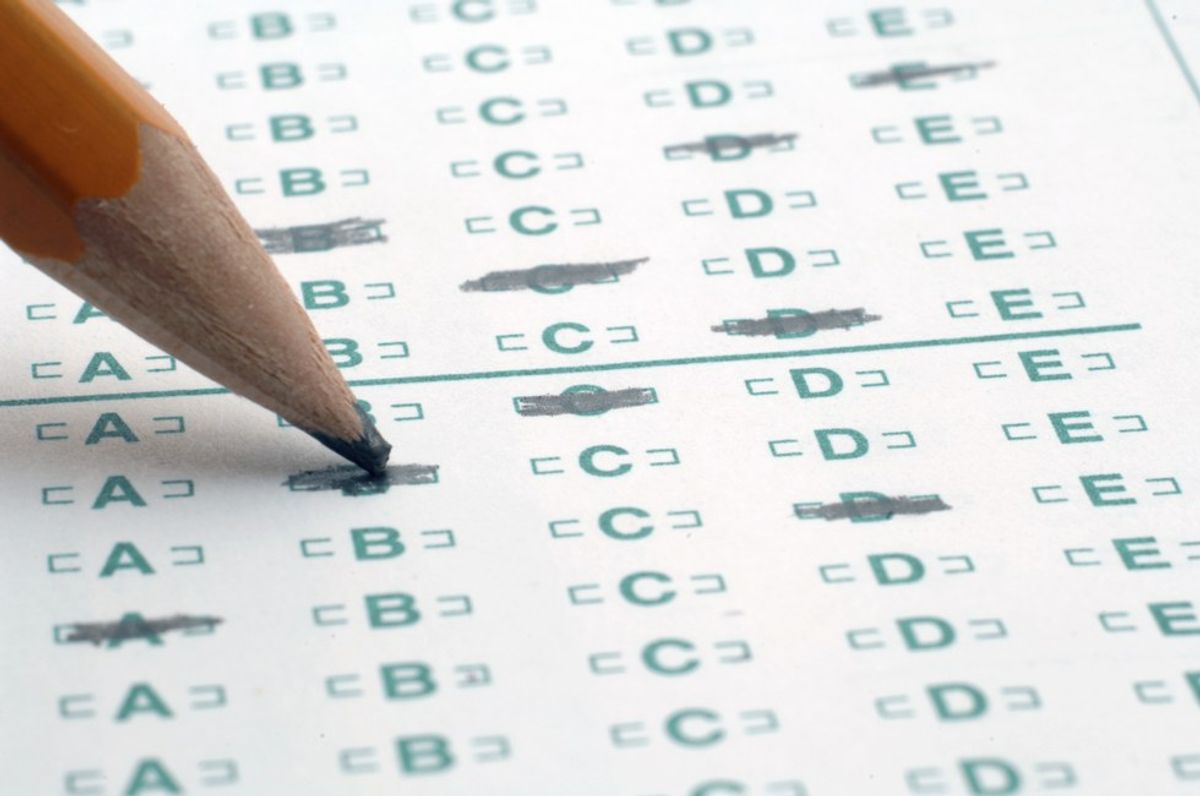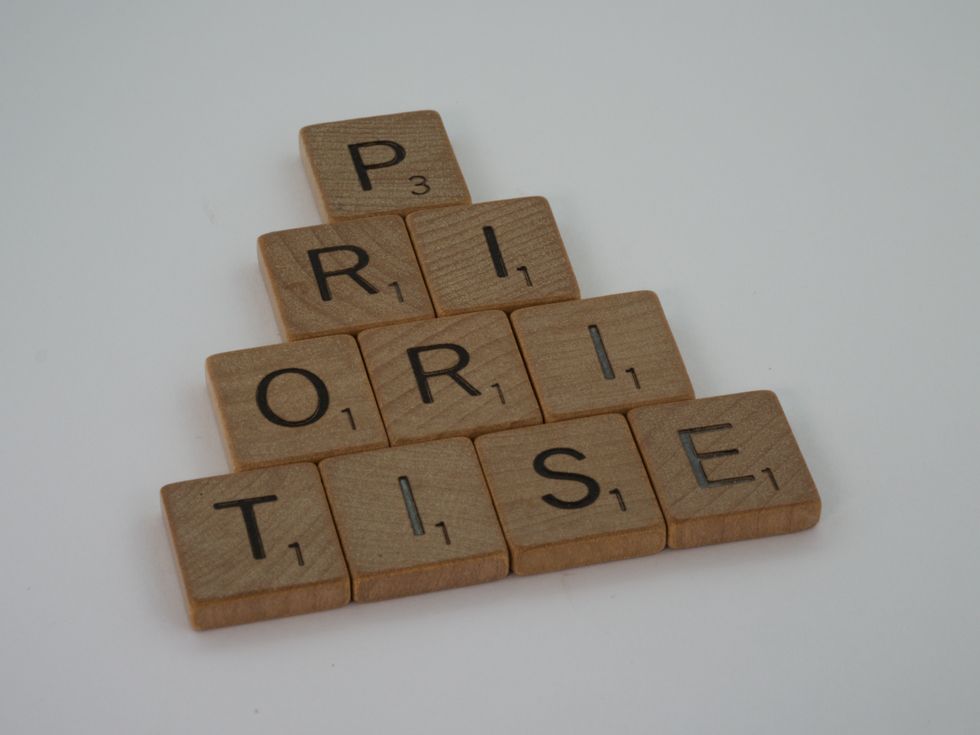Testing season is finally here, and many students across the country are preparing to test what will likely be the most important test in their entire lives. It will not be easy, but here are some ways to get a better score on your ACTs this spring.
1. English
Cross off prepositional phrases.
If you find yourself getting lost in a sea of diction with no clear way to find out if a very should end in an “s” or not, cross out the prepositional phrases to focus more in on the subject of the sentence. It is also helpful to cross out comma phrases like, for example, in the sentence “Tom Brady, five-time Super Bowl champion, ran down the field with the ball.” You could cross out “five-time Super Bowl champion”, a comma phrase, and “with the ball”, a prepositional phrase, until you can focus on the true subject of the sentence:
“Tom Brady, five-time Super Bowl champion, ran down the field with the ball.”
Here is another example:
“Her makeup, along with all her hair products, (was/were) taken by the thief.”
What would we do to figure out the correct verb for this sentence?
“Her makeup, along with all her hair products,(was/were) taken by the thief.”
Now we ask, is “makeup” singular or plural? This may be confusing, as makeup refers to a multiple of things, but because it is a singular group of many things, it counts as singular. So, the correct answer would be “Her makeup was taken.”
2. Math
Confirm the question.
After years of algebra and being forced to always answer for “X”, it is easy to mistakingly solve a question where the question requires you to find X, but X is not the correct answer for the multiple choice. This dilemma can be better understood by examining this problem.
If you're looking at a right triangle, and Side A (adjacent) is 3 and Side B (opposite) is 4, what is Side C^2 (the hypotenuse)?
At this point, you may be tempted to answer “5”, because through the Pythagorean Theorem, you learn to solve the length of the hypotenuse, you do A^2+B^2=C^2, and then find the square root of the answer to the missing variable, which, in this case, would be 5. However, you should remember that they were asking for C^2, not C, so the answer is 25. See how easily that problem could have tricked you?
3. Reading
Make annotations next to the paragraph.
Have you ever read a reading passage, looked at a question, and then forget what paragraph the answer is found in? By writing next to each paragraph what it's about, you'll be better able to reference information for questions and save valuable time to answer more questions on this ridiculously short section. This trick helps especially for the social science, humanities, and natural science sections (it could also work for a prose fiction, but may be more difficult to figure out.
4. Science
Identify Purpose, Method, and Results.
The science section is widely regarded as the most difficult section on the ACT, and the best way to conquer it is by scanning figures and identifying variables the passage and charts. The three main questions about the data are typically why did they do they study, how did they study it, and what did they find. If you can nail those three questions and budget your time, this section will become your easiest.
5. The Essay
Length and Structure
The essay is, in my opinion, the easiest section to succeed in. It is the most formulaic portion of the test, and can be completed very easily with a clearly defined thesis statement, structured and organized supporting paragraphs, and a solid conclusion that doesn't totally rip off your introductory paragraph. If you can manage to accomplish those requirement, along with a fair throw in of obnoxious, flamboyant words, you're sure to get at least a 10.
This test may be hard, but with enough practice, mentoring, and whole hearted dedication to success, anyone can succeed on this exam, and no one should be discouraged by what they believe is their intelligence, and should instead try to achieve as much academic success as possible. Happy studying!





 people sitting on chair in front of computer
people sitting on chair in front of computer



 all stars lol GIF by Lifetime
all stars lol GIF by Lifetime two women talking while looking at laptop computerPhoto by
two women talking while looking at laptop computerPhoto by  shallow focus photography of two boys doing wacky facesPhoto by
shallow focus photography of two boys doing wacky facesPhoto by  happy birthday balloons with happy birthday textPhoto by
happy birthday balloons with happy birthday textPhoto by  itty-bitty living space." | The Genie shows Aladdin how… | Flickr
itty-bitty living space." | The Genie shows Aladdin how… | Flickr shallow focus photography of dog and catPhoto by
shallow focus photography of dog and catPhoto by  yellow Volkswagen van on roadPhoto by
yellow Volkswagen van on roadPhoto by  orange i have a crush on you neon light signagePhoto by
orange i have a crush on you neon light signagePhoto by  5 Tattoos Artist That Will Make You Want A Tattoo
5 Tattoos Artist That Will Make You Want A Tattoo woman biting pencil while sitting on chair in front of computer during daytimePhoto by
woman biting pencil while sitting on chair in front of computer during daytimePhoto by  a scrabbled wooden block spelling the word prizePhoto by
a scrabbled wooden block spelling the word prizePhoto by 
 StableDiffusion
StableDiffusion
 StableDiffusion
StableDiffusion
 StableDiffusion
StableDiffusion

 women sitting on rock near body of waterPhoto by
women sitting on rock near body of waterPhoto by 
 Photo by
Photo by  Photo by
Photo by  Photo by
Photo by  Photo by
Photo by  Photo by
Photo by  Photo by
Photo by  Photo by
Photo by  Photo by
Photo by  Photo by
Photo by  Photo by
Photo by 








